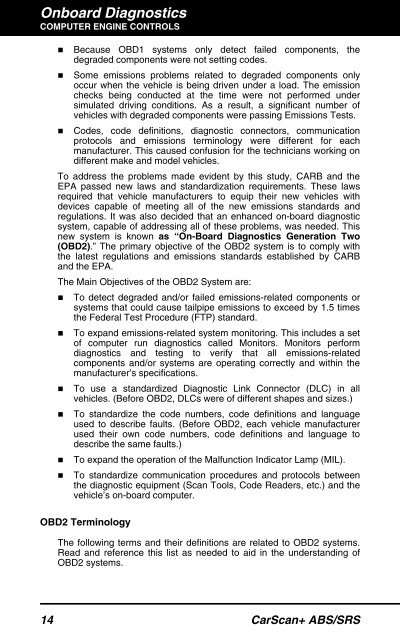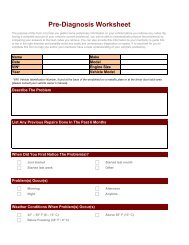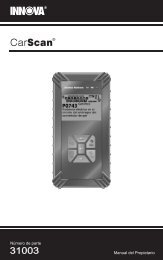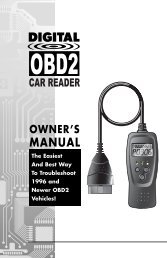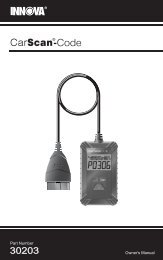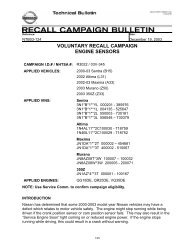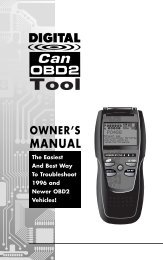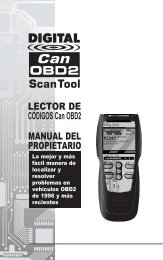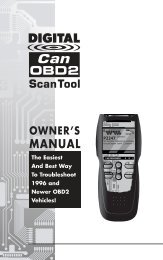31603 - Innova Pro
31603 - Innova Pro
31603 - Innova Pro
Create successful ePaper yourself
Turn your PDF publications into a flip-book with our unique Google optimized e-Paper software.
Onboard DiagnosticsCOMPUTER ENGINE CONTROLS• Because OBD1 systems only detect failed components, thedegraded components were not setting codes.• Some emissions problems related to degraded components onlyoccur when the vehicle is being driven under a load. The emissionchecks being conducted at the time were not performed undersimulated driving conditions. As a result, a significant number ofvehicles with degraded components were passing Emissions Tests.• Codes, code definitions, diagnostic connectors, communicationprotocols and emissions terminology were different for eachmanufacturer. This caused confusion for the technicians working ondifferent make and model vehicles.To address the problems made evident by this study, CARB and theEPA passed new laws and standardization requirements. These lawsrequired that vehicle manufacturers to equip their new vehicles withdevices capable of meeting all of the new emissions standards andregulations. It was also decided that an enhanced on-board diagnosticsystem, capable of addressing all of these problems, was needed. Thisnew system is known as “On-Board Diagnostics Generation Two(OBD2).” The primary objective of the OBD2 system is to comply withthe latest regulations and emissions standards established by CARBand the EPA.The Main Objectives of the OBD2 System are:• To detect degraded and/or failed emissions-related components orsystems that could cause tailpipe emissions to exceed by 1.5 timesthe Federal Test <strong>Pro</strong>cedure (FTP) standard.• To expand emissions-related system monitoring. This includes a setof computer run diagnostics called Monitors. Monitors performdiagnostics and testing to verify that all emissions-relatedcomponents and/or systems are operating correctly and within themanufacturer’s specifications.• To use a standardized Diagnostic Link Connector (DLC) in allvehicles. (Before OBD2, DLCs were of different shapes and sizes.)• To standardize the code numbers, code definitions and languageused to describe faults. (Before OBD2, each vehicle manufacturerused their own code numbers, code definitions and language todescribe the same faults.)• To expand the operation of the Malfunction Indicator Lamp (MIL).• To standardize communication procedures and protocols betweenthe diagnostic equipment (Scan Tools, Code Readers, etc.) and thevehicle’s on-board computer.OBD2 TerminologyThe following terms and their definitions are related to OBD2 systems.Read and reference this list as needed to aid in the understanding ofOBD2 systems.14 CarScan+ ABS/SRS


